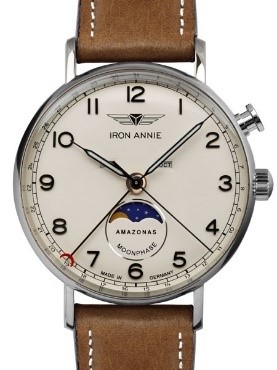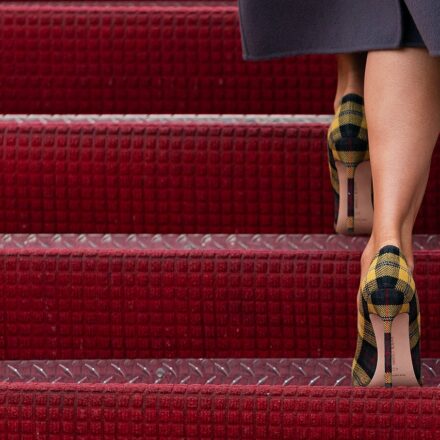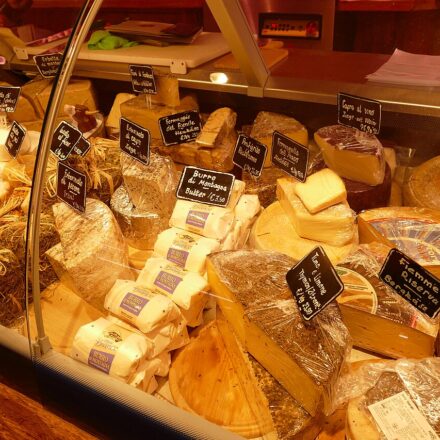Wearables are all the rage nowadays, but some of us still sport watches with an analogue face. Indeed, some sought-after classic timepieces from renowned brands are assets in an investment portfolio.
Point Tec
Point Tec Products Electronic GmbH (Point Tec) is a German company that has been designing and developing watches for over 22 years. Its watches have been sold under trade marks that are associated with aviation including Iron Annie, Junkers and Zeppelin.
Longines
Compagnie des Montres Longines, Francillon S.A. (translate to Longines Watch Co., Francillon Ltd, hereon Longines) is a wholly owned subsidiary of the Swatch Group Ltd. It is a Swiss watchmaker and sells watches under the LONGINES brand.
Longines is the owner of various trade marks in Australia for a winged hourglass device including:
(the Longines Marks). Apart from the registrations in Australia, Longines owns a number of registrations for the winged hourglass device and the LONGINES word mark in a large number of countries throughout the world.
Point Tec’s application
Point Tec applied for the extension of protection to Australia of its International Registration 1392343, details of which are set out below:
(the Iron Annie Winged Mark).
The International Registration was examined in accordance with the Trade Marks Regulations 1995 (Cth), and since no ground of refusal was raised, IP Australia advertised its intention to extend protection to Australia in the Australian Official Journal of Trade Marks on 24 May 2018.
On 28 May 2018, Longines filed its Notice of Intention to Oppose, leading to a hearing on 2 March 2020 before Hearing Officer Louise Tuohy, as delegate of the Registrar.
Evidence before the Hearing Officer
Longines’ evidence in support
Longines adduced evidence that the logo consisting of the winged hourglass was first used by Longines in 1867 and was systematically stamped on calibres produced by the Longines factory from 1867. Although the logo has undergone some minor changes, the main elements of the winged hourglass trade mark have been retained. Longines first used the winged hourglass trade mark in Australia in 1891 in relation to watches and that use has been continuous since then. Longines submitted that goods bearing the winged hourglass trade mark are sold through 83 Australian retailers. The winged hourglass mark is used on the crown, buckle of the leather strap or clasp of the metal watchbands of Longines watches.
The Longines Marks are also applied to merchandise including pens, pins, caps, umbrellas, bags, fans, binoculars, ties, blankets, shoe polish sets, luggage tags, holders, portfolios, sunglasses, scarfs and cufflinks.
Longines also submitted that it had a long history of involvement and sponsorship in sports timekeeping worldwide and in Australia. It has spent millions of dollars advertising and promoting the goods bearing the trade marks worldwide, and ‘respectable’ amounts on Australian media including in newspapers, magazines, television, signage, social networks, catalogues and point of sale material.
Point Tec’s evidence in answer
Point Tec adduced evidence that between 1997-2017, the logos which accompanied Point Tec’s watch range had a ‘Bauhaus’ design characterised by minimalistic and uniform triangular, tetrahedral and stroke designs. However, in or around 2017, to draw a closer connection with aviation, Point Tec created new logos for each of its range. These new logos still included elements of the ‘Bauhaus’ movement, but with additional elements devised from common pilot/military badges. It was through this development that the Iron Annie Winged Mark was created, which notably includes the triangular device and pilot wings.
In relation to the Longines Marks, Point Tec asserted that the documented history of the ‘winged hourglass’ device confirms that it was always Longines’ intention for its device to be seen as a ‘winged hourglass’, and that the public have come to recognise Longines’ device as a ‘winged hourglass’. Further, use of the winged hourglass device was frequently in immediate proximity of the word LONGINES.
Perhaps most telling of all, Point Tec provided a list of Longines’ overseas registered rights and noted that Point Tec had secured protection in a number of countries where Longines also had rights, and that the winged hourglass device was not cited against any of Point Tec’s applications
Longines’ evidence in reply
In response, Longines submitted that the winged hourglass device appears without the LONGINES word on several locations on watches and in particular the crown of some watches, as well as the clasp and buckle of some straps.
It also pointed to a number of jurisdictions in which Point Tec’s application for the Iron Annie Winged Mark was refused over Longines’ prior marks.
Time or reason: grounds of opposition
At the hearing, Longines relied on a number of grounds of opposition under sections 42(b), 44 and 60 of the Trade Marks Act 1995 (Cth), which we will discuss below. Longines bore the onus of establishing at least one of the grounds of opposition, with the standard of proof being on the balance of probabilities.
The rights of the parties were to be determined as at the date of the application which is generally, but not always, the filing date. For the purposes of her analysis, Ms Tuohy proceeded on the basis that the priority date was 12 December 2016. Each of the Longines Marks had an earlier priority date.
Section 44 – identical / similar trade marks
Subsection 44(3) provides the Registrar the power to accept the application for the registration of the Iron Annie Winged Mark if the Registrar could be satisfied that:
- there had been honest concurrent use of the two trade marks (that is, the Iron Annie Winged Mark and a Longines Mark); or
- because of other circumstances, it would be proper to do so.
Pursuant to subsection 44(4), the Registrar could not reject the Iron Annie Winged Mark if the Registrar was satisfied that Point Tec had continuously used the Iron Annie Winged Mark for a period:
- beginning before the priority date for the registration of a Longines Mark in respect of the similar goods or closely related goods; and
- ending on the priority date of the Iron Annie Winged Mark.
There had been no honest concurrent use of the Iron Annie Winged Mark with Longines Marks, and no other circumstances existed such that the Registrar was satisfied that it would be proper to accept the Iron Annie Winged Mark application.
Substantial identity
Although Longines initially pleaded both substantial identity and deceptive similarity, it only pressed the latter limb at hearing. Ms Tuohy agreed with Longines’ approach, as she commented that she was not satisfied that the Iron Annie Winged Mark was substantially identical to the Longines Marks.
She turned to whether the marks were deceptively similar.
Deceptive similarity
Deceptive similarity is defined by section 10 of the Act. To correctly apply the test for deceptive similarity, the Hearing Officer had to first determine the ‘dominant cognitive cue’ of each of the trade marks under comparison; or, in other words, determine the essential feature of the trade marks under comparison.
Longines submitted that all the marks can be described as a ‘graphic consisting of extended wings’ and with the central figure representing very similar geometrical objects, being broader than the rest of the representation. It asserted that the average, reasonably informed, observant and circumspect consumer would not perceive differences between the marks.
Although Ms Tuohy noted that all the marks did comprise the common element of a winged device, she believed that was where any similarity between the marks ended.
Ms Tuohy found the visual differences between the device elements in the marks to be ‘apparent’. The Longines Marks consist of a rectangle with an X inside forming a geometric hourglass design and four feathers on either side forming a geometric wing span in descending order, with the wing span starting above and finishing half way down the hourglass. By comparison, the Iron Annie Winged Mark contain the words IRON ANNIE and the graphical device of a front of plane which feature three triangles converging to form a larger triangle and three separated drooped wing tips in descending order on either side.
In addition to these device element differences, Ms Tuohy noted the meaning and the visual impact of the words IRON ANNIE, which refer to the nickname of the Junkers Ju 52 transport aircraft, as compared to the word LONGINES, which is of French origin and associated with the site of the Longines factory, to be so completely different that it seemed unlikely that the trade marks would be mistaken for each other or otherwise denote a common trade source.
Moreover, Ms Tuohy agreed with Point Tec’s argument that the goods under consideration were luxury items and would be purchased by consumers who are ‘informed and attentive’. Considering the high price point of the goods, it was unlikely that a purchaser would be deceived or confused by similarities between the trade marks under which they were sold.
The striking features of the marks, even though they shared winged devices, meant there were enough dominant cognitive cues present in each trade mark that precluded them from being deceptively similar and prevented the possibility of confusion in the marketplace. The ground of opposition under section 44 was therefore not established.
Section 60 – reputation in Australia
To establish this ground of opposition, Longines had to demonstrate that the Longines Marks upon which it relied had a reputation in Australia at the priority date (being 12 December 2016) and because of that reputation, use of the Iron Annie Winged Mark would likely deceive or cause confusion. Reputation is taken to be ‘the recognition of the [trade mark] by the public generally’. This may be proven by a variety of means including advertisements on television or radio, or in magazines and newspapers within the forum.
Longines filed evidence that its trade marks have, before the relevant date, acquired a reputation in Australia. The evidence showed that the Longines Marks had been well advertised and promoted, through channels such as advertising in magazines, social media, and through the sponsorship or timing of prestigious sporting events – you may recall the LONGINES timekeeper used at the Australian Open. The sales and advertising figures, which were kept confidential, were found to be ‘moderate’ and ‘respectable’ respectively.
Ms Tuohy concluded that Longines had a strong reputation amongst a significant number of people in Australia, in relation to its watches and chronometric instruments and was associated with prestige and quality. Even though the sales revenue and advertising expenditure in Australia was not overwhelming, Longines demonstrated through its worldwide activities that it also had a spill over reputation in Australia.
On the basis of Longines’ worldwide reputation in relation to watches and chronological instruments and the differences between the Iron Annie Winged Mark and the Longines Marks, Ms Tuohy was satisfied on the balance of probabilities that no such deception or confusion would eventuate if the Iron Annie Winged Mark was extended protection in Australia for Longines’ goods. The ground of opposition under section 60 of the Act was not established.
Section 42(b) – contrary to law
Pursuant to section 42(b), the application for the registration of the Iron Annie Winged Mark must be rejected if its use would be contrary to law.
Longines asserted that use of the Iron Annie Winged Mark would likely mislead or deceive in breach of the Australian Consumer Law (ACL) and to constitute passing off at common law. Section 18 of the ACL is concerned with misleading or deceptive conduct. As Ms Tuohy had found that Longines failed to establish a ground of opposition under section 60, and case law relevant to the ACL had made it plain that section 18 of the ACL imposes a more stringent test than that for deception or confusion under section 60, Longines had not established this ground of opposition.
Time flies … the decision
As Longines had failed to establish any of the grounds of opposition, extension of protection to the Iron Annie Winged Mark was allowed to proceed to registration. Will it gain its own momentum as a reputable watch brand in Australia like LONGINES? Time — elegantly monitored — will tell.
Featured image: Kozuch, CC BY-SA 3.0, Wikimedia Commons.















